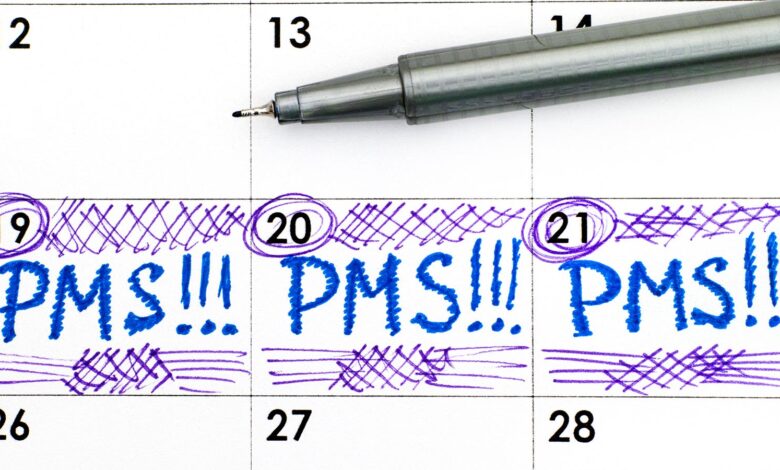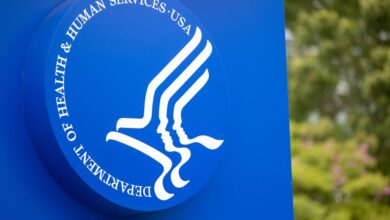Suicide Risk Higher for Women With Premenstrual Disorders

—
Risk highest for women diagnosed before age 25
by
Shannon Firth
,
Washington Correspondent, MedPage Today
May 28, 2024
Premenstrual disorders (PMDs) were associated with a higher risk of death from nonnatural causes, but not with overall mortality among women, a study in Sweden showed.
Women with PMDs did not have a heightened risk of overall mortality (adjusted HR 0.91, 95% CI 0.82-1.02) over a mean follow-up of about 6 years, reported Marion Opatowski, PhD, of the Karolinska Institutet in Stockholm, and colleagues.
However, they had a greater risk of death due to nonnatural causes (HR 1.59, 95% CI 1.25-2.04) and nearly twice the risk of death by suicide (HR 1.92, 95% CI 1.43-2.60) versus women without PMDs, the researchers wrote in JAMA Network Open.
Women diagnosed with PMDs before age 25 more than doubled the risk of all-cause mortality (HR 2.51, 95% CI 1.42-4.42) and death from both suicide (HR 3.84, 95% CI 1.18-12.45) and natural causes (HR 2.59, 95% CI 1.21-5.54) compared with unaffected women, Opatowski and co-authors pointed out. Women with PMDs diagnosed at ages 45-51 had a lower mortality risk (HR 0.79, 95% CI 0.64-0.97) versus their counterparts without PMDs.
“Because diagnosis is usually delayed, women diagnosed early may have a very severe form of PMDs,” Opatowski said in an email to MedPage Today.
“Although suicidal behavior is more common in young women, the association between PMDs and premature mortality is not completely explained by suicide, which account for one-third of the deaths,” she continued. “More research is needed to better understand the findings and examine the cause-specific mortality — if they experience more severe disease course, or do not respond well to treatment options, for example.”
PMD symptoms include depression, mood swings, and mood disorders. PMDs encompass both premenstrual syndrome and premenstrual dysphoric disorder, which is a severe form of PMD experienced by 2% to 6% of women of reproductive age. The latter is classified as a depressive disorder, Opatowski noted.
Previous studies have linked PMDs with suicidal ideation and behaviors, but the “current study was the first to further demonstrate that they are also at risk for completed suicide, which was not surprising,” Opatowski wrote.
In their analysis, Opatowski and colleagues used inpatient, outpatient, and drug dispensing data from Swedish national health and population registries. Dates of death and underlying causes were tracked through the national death register. Suicides and accidents were considered deaths from nonnatural causes.
The study included 406,488 women; of these, 67,748 had clinically diagnosed PMDs from 2002 through 2018. The mean age at PMD diagnosis was about 36.
More than half of women in the matched cohort lived in the middle of Sweden. About 10% of women with PMDs and 9% of women without PMDs had one or more somatic comorbidity. Psychiatric disorders were more common for women with PMDs (23.8% vs 14.1%).
During a mean follow-up of 6.2 years, 367 deaths occurred among women with PMDs (8.4 deaths per 10,000 person-years), and 1,958 deaths occurred among women without PMDs (9.1 deaths per 10,000 person-years).
The top five top causes of death among the 367 women with PMDs were neoplasms (40.9%), suicide (27.2%), cardiovascular diseases (7.9%), accidents (7.9%), and nervous system diseases (4.9%).
Overall, the findings highlight the importance of a standard care pathway for PMDs and overall awareness of the disorder, the researchers noted. A multidisciplinary care team including mental health specialists, gynecologists, general practitioners, and other health professionals may help mitigate negative consequences including suicidal behavior and premature death, they added.
Study limitations included the fact that PMD was identified through diagnoses received by specialists or through medication receipt, which may exclude many women with PMDs, Opatowski noted.
In addition, “the duration of our follow-up restricted our investigation to premature death alone, leaving longer-term outcomes unexplored,” she wrote. “Extending the follow-up period would offer valuable insights.”
If you or someone you know is considering suicide, call the 988 Suicide and Crisis Lifeline.
-
![author['full_name']](https://clf1.medpagetoday.com/media/images/author/shannonFirth_188.jpg)
Shannon Firth has been reporting on health policy as MedPage Today’s Washington correspondent since 2014. She is also a member of the site’s Enterprise & Investigative Reporting team. Follow
Disclosures
Opatowksi disclosed support from the Mental Health Foundation.
Co-authors disclosed support from the Swedish Research Council for Health, Working Life and Welfare (FORTE), the Swedish Research Council (Vetenskapsrådet), the Karolinska Institutet Strategic Research Area in Epidemiology and Biostatistics, and the Icelandic Research Fund.
Primary Source
JAMA Network Open
Source Reference: Opatowski M, et al “Mortality risk among women with premenstrual disorders in Sweden” JAMA Netw Open 2024; DOI:10.1001/jamanetworkopen.2024.13394.


